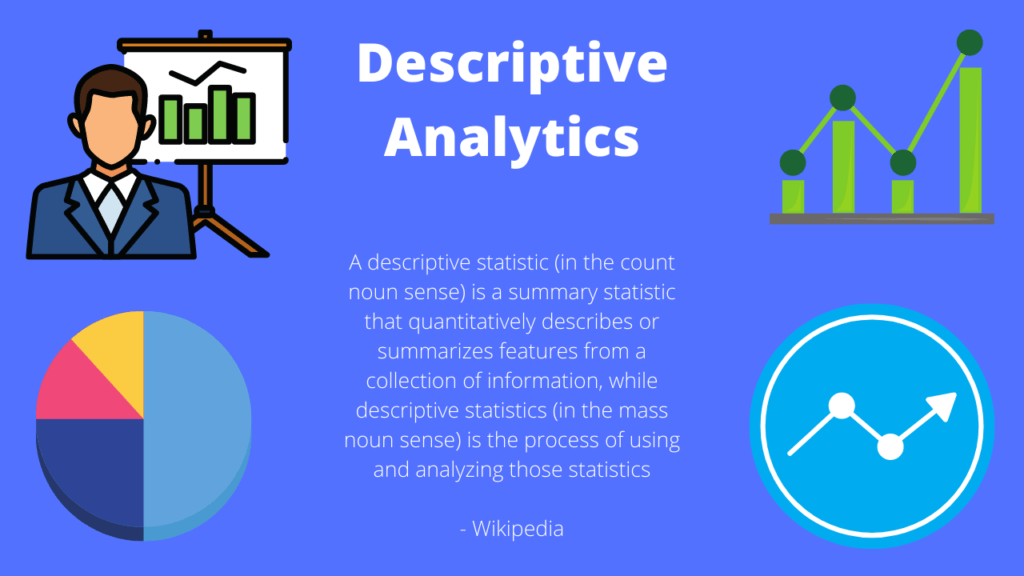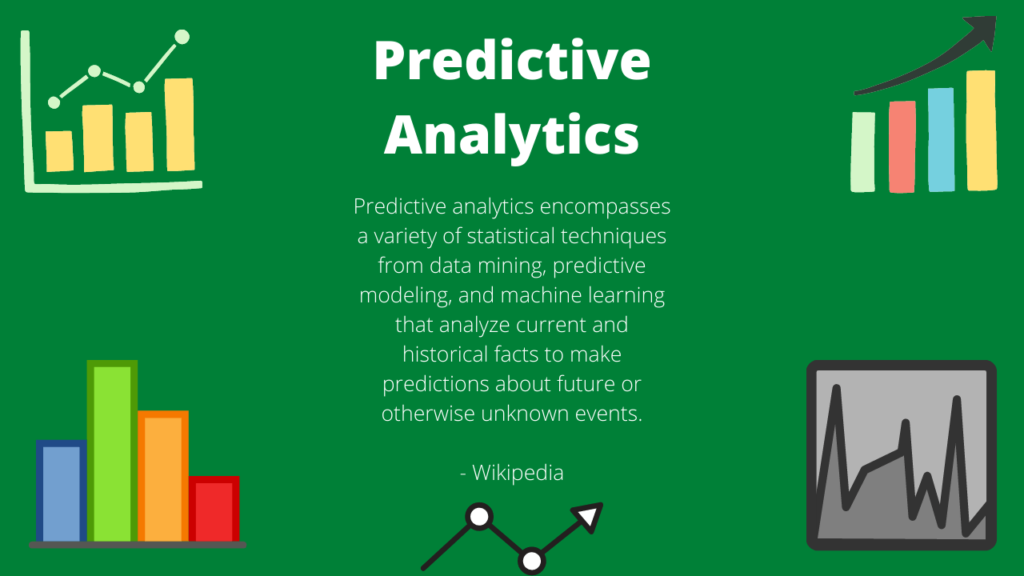In this blog post, you are going to learn what is data analytics and the top different types of Data Analytics used in today’s industry.
Data analysis comes with the fundamental types of data analytics encountered in data science: Descriptive, Diagnostic, Predictive, Prescriptive, and Cognitive.
In the field of data science, the most important skill of data scientists is to translate data into insights in a clear and meaningful way.
Data is generating and speeding more massively in today’s world than available and present in the daily operations of businesses today.
The business-generated data go to analytics to drive more efficient solutions and well decision-making strategies.
Every individual must consider various data analytic techniques to find what will allow them to get the most out of the gathered information.
The data analytics process is classified into five key categories of analysis that show how these 5 types of data analytics improve decision-making.
What is Data Analytics?
Data analytics is the process of deriving useful insights from data, It is a subset of data science, although the terms are often used interchangeably.
Data analytics itself breaks down into several sub-areas:
1. Statistical analysis,
2. machine learning,
3. Business intelligence (BI).
Data analytics is the analysis of large volumes of data in order to identify patterns or trends.
It is a process of collecting historic and current data and analyzing it to understand how the past may be projected into the future.
It’s a process used to make better decisions in marketing, finance, research, sales, and strategic management fields.
Today’s business world has become so competitive that it is not possible for an organization to succeed based on intuition and subjective analysis.
While on one hand, cutting-edge technologies offer great tools for data-guided decision-making, organizations are losing out on opportunities for growth by ignoring analytics.
The demand for Data Analytics professionals has been going up significantly and this trend is expected to continue in the future.
Data analytics is a type of business intelligence or It is similar to Business Intelligence, but the difference is that Data Analytics isn’t limited to just reporting.
Through data analysis, you can get new insights into your organization and the businesses you plan to start in the future.
Related Article: What are the Steps in Data Analysis? You Should Know
5 Types Of Data Analytics
In the following topics, we will cover types of data Analytics in detail and we will see the exact example of each:
1. Descriptive Analytics: What is happening?

It is the first and most common type of data analytics in different forms, that provides the analyst with a view of key indicators and measures in business.
Descriptive analytics used in businesses commonly assesses historical data for finding the trends, customer patterns, areas to do improvement, etc.
It uses data to give a correct insight into what has happened in a business and how that differs every time.
An example of descriptive statistics or analytics is to calculate the mean, median mode, standard deviation, and similar kinds of statistical calculations on finance or sales data.
Related Article: What are the 3 Methods of Data Collection?
Advantages of Descriptive Analytics
Descriptive Analytics refers to a type of Data Analytics that describes data facts like high, low, average, and other descriptive measures.
For example, how many people have purchased a product on an eCommerce website? What is your salary based on age, gender, and experience? etc.
These kinds of descriptive analytics answer questions about what is happening in their organization or company.
Related Article: What is Exploratory Data Analysis? | EDA in Data Science
2. Diagnostic Analytics: Why is it happening?

This is the second step of complexity in data analytics as descriptive analytics which does an assessment of the descriptive data.
The diagnostic analysis can use different tools to go deep dive into the data to find all complexity and root causes of a problem.
Diagnostic analytics can do multiple operations on data like data discovery, data mining, and different type of bivariant data analysis like correlation, etc.
An example of diagnostic analytics is to perform different features analytics on data like selecting the two, or three or more features from data and performing different statistical analytics like univariate, bivariate, or multivariate analysis to diagnose the relationship between variables.
Advantages of Diagnostic Analytics
In order to diagnose a problem in business, you need to collect information about your product or service, This is where diagnostic data analytics comes into play.
Diagnostic Analytics will help you identify and analyze trends in operational, financial, competitive, and customer behavior information that helps you understand why certain events happened and what impact they may have on future business performance.
3. Predictive Analytics: What is likely to happen?

Predictive analytics is all about prediction and forecasting based on historical or past data.
It shows the prediction of data in different ways like whether the likelihood of an event happening in the future, forecasting the different possibilities, etc.
Predictive analytics comprises a variety of statistical methods from data mining, predictive modeling, machine learning, Deep learning, and past data to make future predictions or unknown events.
Predictive models typically utilize variability in data to make the correct prediction and more variability of ingredient data that shows the relationship with what is possible to predict that united together into a prediction or valid score.
In Today’s world, there is huge uncertainty, and the prediction of data allows us to make better decisions, and that is why Predictive modeling is the most influential part across a number of fields.
Related Article: What Are The Steps In Data Analysis?
Advantages of Predictive analytics
Predictive analytics is a branch of business intelligence that focuses on forecasting future events.
It is used for predictive modeling and it can help you to predict future outcomes or trends based on historical data.
This method is widely used in finance and marketing to forecast sales and consumer behavior, but it can also be applied in other areas such as manufacturing, healthcare, education, etc.
4. Prescriptive Analytics: What do I need to do?

Prescriptive modeling is the fourth and last phase of data analytics, which includes other types of data analytics like descriptive and predictive analytics.
The prescriptive model is in terms of value and complexity utilizes an understanding of what, why happened, and what might happen in the analysis that helps to determine the best course of action to take.
Prescriptive modeling is typically not just one individual action in analytics, but it is a combination of other actions.
AnalyicsLearn
Advantages of Prescriptive Analytics
Prescriptive analytics aims to anticipate problems in advance and recommend solutions and it predicts what will happen with a high probability in the future.
It thus helps take action before an issue occurs. For example, marketing analysts can use prescriptive analytic models to forecast sales volume, estimate market share, and select optimal pricing strategies based on historical sales patterns and product performance information.
5. Cognitive Analytics: How it will perform?

Intellectual figuring and cognitive analytics marked innovation stages ordinarily represent considerable authority in the preparing and examination of the enormous amount of unstructured datasets.
Word preparing archives, messages, recordings, pictures, sound documents, introductions, site pages, web-based media, and numerous different information organized frequently should be physically labeled with metadata before they can be taken care of to a PC for investigation and knowledge age.
The chief advantage of using (cognitive analytics) intellectual investigation over conventional enormous information examination is that such datasets don’t should be pre-labeled.
Different qualities of cognitive analytics (intellectual investigation) framework include:
Flexibility: cognitive analytics frameworks can utilize AI to adjust to various settings with negligible human management
Robotics: It is used in humanoid robots and different AI-based machines to improve learning rate and decision-making based on information.
Normal language connection: Cognitive frameworks can be outfitted with a chatbot or search associate that gets questions, clarifies information bits of knowledge, and interfaces with people in regular language.
Advantages of Cognitive Analytics
Cognitive Analytics is a combination of predictive and descriptive analytics. Cognitive Analytics has been specifically designed to handle immeasurable, unpredictable, and chaotic behavior within an organization’s business process.
With Cognitive Analytics, organizations can more accurately predict consumer behavior, determine problems within processes before they occur, and make better business decisions that could save thousands or even millions per year.
When it comes to utilizing cognitive analytical methods, there are many advantages that can be realized and The first advantage would be improved communication.
Once organizations begin using Cognitive Analytics, information becomes much easier to obtain for all parties involved because all insights will be provided through one system instead of being spread out throughout multiple departments within an organization.
Types of Data Analytics Applications
Data Analytics is an emerging discipline that helps firms make sense of large amounts of structured and unstructured data.
It plays a major role in understanding users’ behavior and decision-making patterns so as to fine-tune your product/service offerings.
It has a direct impact on revenue, market share, customer retention, and churn rate. The increasing use of technology by businesses across all industries makes it imperative for organizations to stay ahead of their competitors.
For example, retail players like Amazon or Flipkart analyze millions of transactions using advanced algorithms every day.
Retailers with their own brick-and-mortar stores collect and organize shopper data like what they bought when they visited a store, and where they came from while those without physical stores collect similar data through loyalty card programs all helping them gain competitive insights into consumer behavior.
Related Article: What are the important Data Analysis Techniques?
Conclusion
The different sorts of analytics and data modeling can provide diverse amounts of value to a business.
All the types of data analytics methods are essential for specific data that may vary based on domain and type of business.
These four types of analytics methods may crucially apply all together for business problems mostly or sometimes separately.

Meet Nitin, a seasoned professional in the field of data engineering. With a Post Graduation in Data Science and Analytics, Nitin is a key contributor to the healthcare sector, specializing in data analysis, machine learning, AI, blockchain, and various data-related tools and technologies. As the Co-founder and editor of analyticslearn.com, Nitin brings a wealth of knowledge and experience to the realm of analytics. Join us in exploring the exciting intersection of healthcare and data science with Nitin as your guide.










